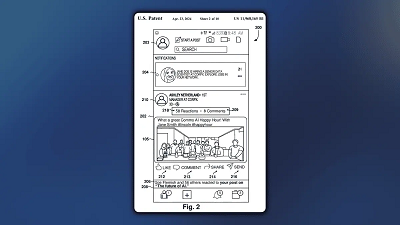1
Patents, Software Patents, Patent applications / Microsoft files patent for a system that may help you get viral on social media
« Last post by javajolt on April 26, 2024, 04:49:05 PM »Here's how

USPTO, the patent agency from the US government, has recently published a patent application from Microsoft that describes a system of tailored social media notifications based on engagement.
So, in other words, the Redmond company is developing a system for social media apps to send notifications, but they’re customized based on whether the receiver engages with the poster’s content a lot. The 22-page document‘s publication date is dated April 23, 2024, although Microsoft initially filed for it back in December 2022.

But what does it do? Well, when you follow people on social media apps, like Instagram, X, and YouTube for example, you can opt to get notified on their latest Insta post, tweet, or long video. This system is deemed as outdated because, truth be told, not everyone clicks on all of these “new post” notifications.
Microsoft wants to eliminate that. Even though you’ve followed or subscribed to these accounts, this system will only send you these notifications if you’re engaged with their content a lot (click, like, watch, etc.). Other than that, it will only send you occasional notifications. So, if you’re a content creator, you can use this information to create content that your audience likes a lot, lot better.

This method uses a “scoring system” called rAffinity, which measures how likely a content creator is to interact with a notification when a viewer engages with their content. It then guides content recommendations for content creators so that they know which content gets the most engagement.
It’s somewhat similar to what YouTube does by letting you get “all” or “personalized” notifications, but the difference is, that it’s the system itself that decides on the intensity of these notifications.
The USPTO has granted Microsoft this patent, just like the patent for a system that makes Bing’s reverse image search smarter, so we might see it in action soon. But it’s best to take this with a grain of salt: since most big social media apps aren’t Microsoft’s, except LinkedIn and Skype, they might have to work with other companies.
source

USPTO, the patent agency from the US government, has recently published a patent application from Microsoft that describes a system of tailored social media notifications based on engagement.
So, in other words, the Redmond company is developing a system for social media apps to send notifications, but they’re customized based on whether the receiver engages with the poster’s content a lot. The 22-page document‘s publication date is dated April 23, 2024, although Microsoft initially filed for it back in December 2022.

But what does it do? Well, when you follow people on social media apps, like Instagram, X, and YouTube for example, you can opt to get notified on their latest Insta post, tweet, or long video. This system is deemed as outdated because, truth be told, not everyone clicks on all of these “new post” notifications.
Microsoft wants to eliminate that. Even though you’ve followed or subscribed to these accounts, this system will only send you these notifications if you’re engaged with their content a lot (click, like, watch, etc.). Other than that, it will only send you occasional notifications. So, if you’re a content creator, you can use this information to create content that your audience likes a lot, lot better.

This method uses a “scoring system” called rAffinity, which measures how likely a content creator is to interact with a notification when a viewer engages with their content. It then guides content recommendations for content creators so that they know which content gets the most engagement.
It’s somewhat similar to what YouTube does by letting you get “all” or “personalized” notifications, but the difference is, that it’s the system itself that decides on the intensity of these notifications.
The USPTO has granted Microsoft this patent, just like the patent for a system that makes Bing’s reverse image search smarter, so we might see it in action soon. But it’s best to take this with a grain of salt: since most big social media apps aren’t Microsoft’s, except LinkedIn and Skype, they might have to work with other companies.
source

 Recent Posts
Recent Posts


















